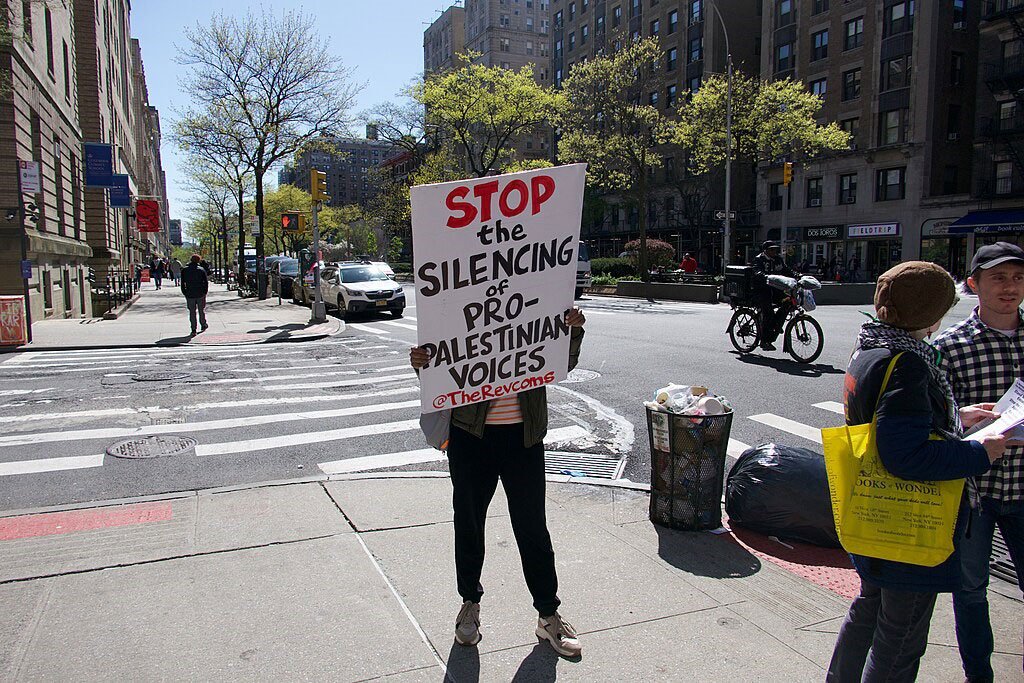Author Jack L. Rozdilsky is Associate Professor of Disaster and Emergency Management, York University, Canada.
On April 30, the New York City Police Department acted to evict pro-Palestinian protestors from occupying Columbia University’s Hamilton Hall at the request of university administration. Minouche Shafik, president of Columbia University, issued a statement explaining the action as the result of the “drastic escalation of many months of protest activity” that created “a disruptive environment for everyone.”
Student protesters sympathetic to the plight of the Palestinians have adopted similar tactics to those used by anti-war protesters in 1968. Grievances are escalated to the point of no return. Significant interruptions to the functioning of campus take place by staging an occupation.
What’s happening at Columbia University now can be understood through what happened on campus 56 years ago, almost to the day. Understanding what happened in 1968 gives us a situation easier to grasp than the emotionally laden current events, and can provide us with constructive clues to help undo the predicament tearing universities apart today.
Campuses torn apart
One segment of the university community is sympathetic to the impacts of the Oct. 7 attack on Israel and hostage-taking by Hamas. A class action complaint claiming antisemitism has been filed, and statements contending a lack of safety for Jewish students on the Columbia campus have been made.
Another segment of the university community is sympathetic to the plight of Palestinians, who have been galvanized by viewing the scale of death in Gaza through an intersectional lens. Included in the demands by the protesters are requests that the university divest from supporting activities they deem as oppressive.
Claims of Islamophobia and anti-Arab racism on the Columbia campus have also been made, and a Title IX civil rights complaint has been filed with allegations of discriminatory treatment of Palestinian students and their allies.
A house divided into two distinct camps regarding views on the Israel-Hamas war is perhaps an oversimplification of a diverse university campus environment, where many choose to avoid Middle East politics entirely as the path to civil dialogue is elusive.
Be that as it may, with loud voices present and emotions running high in a house divided, I lament that dispassionate observation and analysis are becoming drowned out in the noise.
The 1968 Columbia crisis
While there are no easy solutions to overcoming the predicament facing many campuses, considering campus crisis events from long ago can help mend fences.
The cumulative tensions related to war and peace issues reached a boiling point in the spring of 1968 for Columbia University students. An important similarity between 1968 and 2024 is that just as anti-Vietnam War protesters personalized the conflict, present day university students engaged in Gaza War protests are also making a distant war personal.
The historic Columbia student occupation began on April 23, 1968. Specific issues of discontent driving the occupation included anti-Vietnam War sentiments, demands that the university divest from military-related activities, opposition to racism and the disapproval of the university’s proposed expansion into Morningside Park.
Protest actions taken by students during the multi-day uprising included the occupation of five campus buildings and temporarily preventing the acting dean from leaving his office. About a week into the occupation, negotiations to end the standoff became futile, and on April 30 at 2 a.m., New York City police acted to remove students from occupied buildings. The arrest tally was 712, and 148 were injured.
In The Strawberry Statement: Notes of a College Revolutionary, author James Kunen provides insights into the mindset of a student on the front lines of the protests at Columbia. At the time, Kunen was a 20-year-old writing about trying to find his own place in a turbulent environment.
The Cox Commission Report on the Crisis at Columbia, released in September 1968, provides results of the university’s investigation. Highlights of the findings were the lack of effective channels of communication between administration, faculty and students, and an endorsement supporting the creation of a representative University Senate.

Gaza Solidarity Encampment at Columbia University (PC: Wikimedia commons)
The past repeats
It is not too soon to have concerns that in August the Democratic National Convention in Chicago may be interrupted by Gaza War protests. The 1968 Democratic National Convention, which was also held in Chicago, was overshadowed by disruptive anti-Vietnam War protests.
An open question is whether students who are presently engaged in campus protests will take their dissent off campus during the summer months when school is out.
With reports of more than 2,000 people arrested during pro-Palestinian protests at college campuses across the U.S. in recent weeks, the role of universities in coping with contentious societal issues is in sharp focus.
As pointed out by American political scientist Stephen Walt, academic institutions should always avoid taking sides in a war. That sentiment is drawn from a document written 57 years ago, in a past era of turmoil on campuses. “The Kalven Committee: Report on the University’s Role in Political and Social Action” provides lessons from the past that are relevant today as universities are coping with a new era of turmoil on campuses.
In a quote from the 1927 play A Moon for the Misbegotten, American playwright Eugene O’Neill seems to have written presciently about the current state of affairs on university campuses: “There is no present or future — only the past, happening over and over again — now.”


